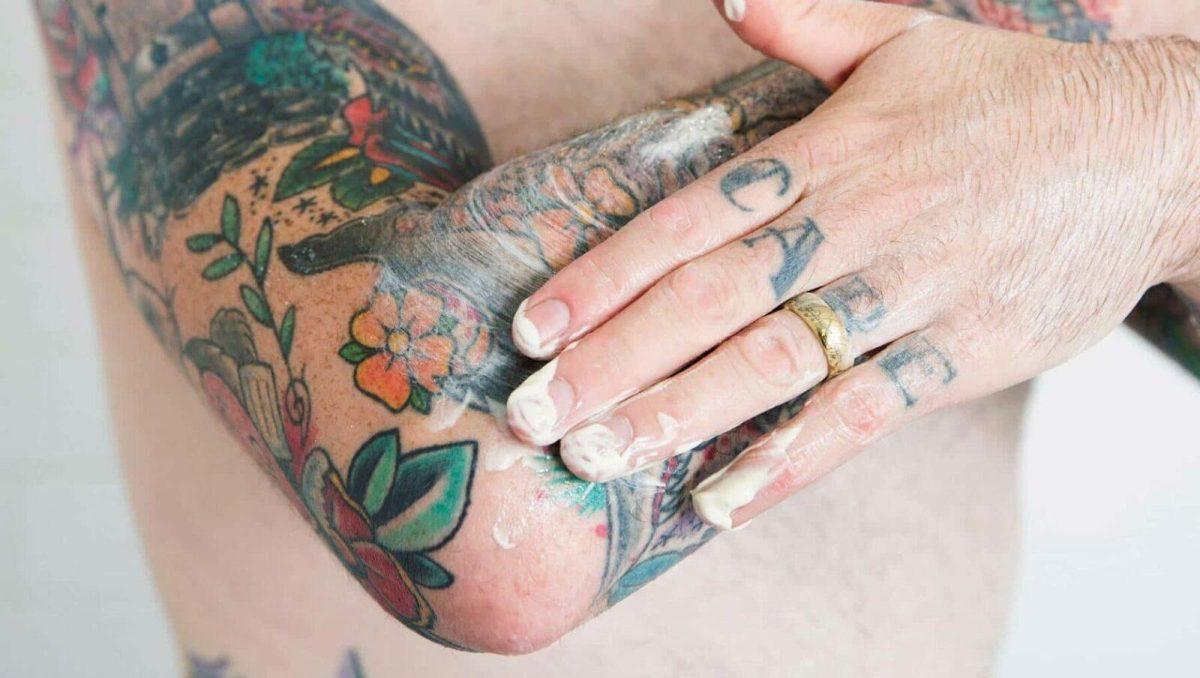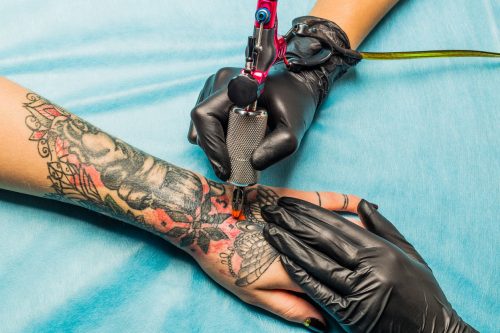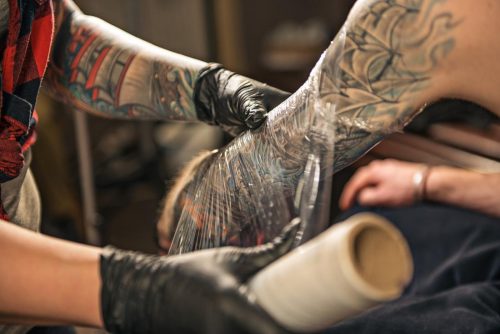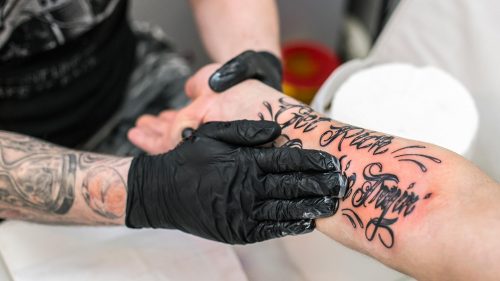
The Complete Tattoo Care Guide
Contents:
A tattoo is more than just a piece of art, it is a way to validate your personal style. This is a procedure that must be done professionally because the artist uses a needle to inject ink under the skin, and every time you open the skin, you become vulnerable to scars and infections. If you want to find a great tattoo care guide, this blog is for you. Here on this blog, we have compiled information about tattoo care, before, during and after applying one of these so that the tattoo heals well and looks great. So it's a good idea to keep reading this blog and enjoy everything we tell you here.

The Complete Tattoo Care Guide
Caring for a tattoo can prevent complications and ensure that it heals properly. It is important to know that when you are getting a tattoo, there are some considerations you must keep in mind when caring for it. Apart from visiting a reputable and licensed tattoo artist, you should take care of your new tattoo at home. It is recommended that you keep reading this complete guide on how to care for your tattoo before, during, and after applying to your skin.
How to care for a tattoo after it has been done
Aftercare begins as soon as the tattoo is completed. The artist should apply a thin layer of Vaseline to the tattoo and then cover the area with a bandage or plastic wrap. This coating prevents bacteria from entering your skin and also protects the tattoo from rubbing against your clothing and irritation.

It is important not to remove the bandage for several hours, this will help absorb any liquid or excess ink that has leaked from the tattoo. After a few hours, the bandage can be removed. It is important to wash your hands first with warm water and soap and then gently wash the tattoo with unscented soap and water. Finally, wipe off the skin with a soft cloth and apply a small amount of Vaseline to the tattoo. At this point, you can remove the bandage to allow your skin to breathe.
While your tattoo is healing, you should:
- It is advisable to wear protective clothing from the sun when you go outside.
- If you have signs of infection or other tattoo problems, see your doctor or professional tattoo artist.
- It is important not to cover the tattoo with sunscreen until it has completely healed.
- Skin and tattoo should not be scratched.
- Do not wear tight clothing over the tattoo.
- It is not recommended to swim or immerse your body in water for a long time.
Aftercare for your tattoo day in and day out
The healing rate of a tattoo depends on its size and the amount of scarring on the skin. Larger tattoos will stay red and puffy longer as they cause more damage to the skin. In the following, we'll show you how to take care of your tattoo on a daily basis, so you can do it if you've just got a tattoo on your skin.

Day 1
On the first day, you will go home with a bandage on your tattoo. You can remove this bandage after a few hours, but it is important to ask a professional tattoo artist how long to wait before removing it. After removing the bandage, you will probably notice liquid oozing from the tattoo. These are blood, plasma, transparent part of blood and additional ink. This is normal and your skin is red and sore. It may also feel slightly warm to the touch. Finally, with clean hands, wash the tattoo with warm water and unscented soap. Then apply the healing ointment and leave the bandage on to help the tattoo heal.
2-3 days
These days, your tattoo will have a dull and hazy look. This happens when your skin heals and crusts begin to form. It's important to wash your tattoo once or twice a day and apply a moisturizer without perfume or alcohol. During the wash, you may notice ink dripping into the sink. It's just excess ink coming off your skin.
4-6 days
These days, the redness should start to fade. You will probably notice a small crust on the tattoo. The scabs should not be as thick as the scabs that appear when you cut yourself, but they will lift slightly off your skin. Do not touch the scabs, as this can lead to scarring. Continue to wash your tattoo once or twice a day and then reapply a moisturizer.
6-14 days
During these days, the scabs have hardened and will begin to peel off. Don't bother them or try to take them off, let them come out naturally. Otherwise, it can remove ink and leave scars on the skin. At this point, your skin may itch a lot, which suggests that it is healing very well. To relieve itching, lightly rub in moisturizer several times a day to relieve itching. If your tattoo is still red and swollen at this stage, you may have an infection, so you should return to your artist or see your doctor.
15-30 days
In this last stage of healing, most of the large scabs will disappear. You can still see dead skin, but it should also fade over time. The tattooed area may still look dry and dull. It is important to continue hydrating until the skin is hydrated again. By the second to third week, the outer layers of the skin should heal. It may take three to four months for the lower layers to heal completely. By the end of the third month, the tattoo should look as bright and vibrant as the artist intended.
Long Term Tattoo Care Tips
After your tattoo has healed, it is important to think about leaving it. While you don't need to take special care of it after three or four months, there are some steps you can take to prevent ink degradation.
- It is important to keep it clean. To do this, you need to wash your skin daily with a mild, fragrance-free soap.
- It is important that it stays hydrated. To do this, you need to drink plenty of water to keep your skin hydrated.
- It is important to consider what you are wearing. Wear soft clothing and avoid scratching fabrics such as wool, which can damage your tattoo.
- It is advisable to avoid excess weight or weight loss, as this can stretch or distort the tattoo and change its design.
Tattoo care products
Tattoo care is very important and here we want to tell you how to do it. It is important to use a mild, unscented soap or tattoo cleaner to clean this area. Your tattoo artist may recommend a special tattoo cleaner.
For the first few days, a petroleum-based ointment should be used to help the tattoo heal. Cosmetic petroleum jelly is good for tattoos as it doesn't clog pores or cause infection. But it should be applied only in a thin layer, as applying too thick a layer will not allow the skin to breathe.
After about two days, you can switch to your regular moisturizer. Whichever you choose, it's important to make sure it is free of fragrances and additives such as dyes that can dry out your skin. When you take care of her, your tattoo can be very shiny.
Possible side effects and complications
In the first few days after getting a tattoo, your skin may be red, itchy, and sore. You may notice excess ink leaking from your skin, as well as blood and fluid, but this is normal. If you start to experience symptoms of any of the following complications, see your doctor:
Infection- A tattoo that is not properly cared for can become infected. The infected skin will become red, warm, and painful. Pus may also leak. If the equipment or ink your artist was using was contaminated, you could get a bloodborne infection such as hepatitis B or C, tetanus, or HIV. There have also been reports of other infections such as mycobacterial skin infections that are transmitted through tattoos.
Allergic reactions- If you are sensitive to the ink that your artist used, you may have a red and itchy skin reaction in this area. Red, green, yellow and blue dyes can cause reactions most often.
scarring- Damage from the needle or puncture of the tattoo can lead to the formation of scar tissue on the body. Scars can be permanent.
Do not forget to leave your comment about the information we give you on this blog.
Leave a Reply